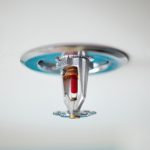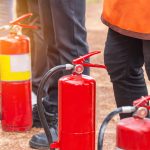By employing a range of fire safety tips and strategies, you can help keep your family and friends safe from fire. A quick response is key: did you know that if a fire starts in your home you may have as little as two minutes to escape?1Source: U.S. Department of Homeland Security. Learn More.
Fire safety measures include those that are intended to prevent ignition of an uncontrolled fire and those that are used to limit the development and effects of a fire after it starts.

There are many ways to increase the fire safety of a product, from its design to the material used and its application. Using flame retardants remains one of the most effective ways to prevent or slow ignition. Flame retardants in products are an essential component of the fire prevention tool box.2Source: SFPE. Flame Retardants: Background and Effectiveness. Learn More.,3Source: “Chapter 4-Natural fibers: Their composites and flammability characterizations.” Multifunctionality of Polymer Composites, D Bhattacharyya, A Subasinghe, NK Kim – 2015 – Oxford: William Andrew Publishing.
Flame Retardants
Flame Retardants are a critical tool that work to inhibit a fire. Other tools, such as the ones noted below, come into play after the occurrence of a fire.
Codes and Standards
In the context of fire safety, codes and standards establish minimum performance requirements for how a product responds to an ignition source like a spark, flame, or other heat source. They help make homes, offices, furniture, electronics, and other consumer goods safer.

Smoke and Fire Alarms
Smoke and fire alarms that are properly installed and maintained play a vital role in reducing fire deaths and injuries.
Sprinklers
Properly installed and maintained home fire sprinklers can dramatically reduce the heat, flames, and smoke produced in a fire.

Fire Extinguishers
Portable fire extinguishers can save lives and property by putting out small fires or containing them until the fire department arrives.
Carbon Monoxide Alarms
Carbon monoxide (CO) alarms should be placed in every home with at least one fuel-burning appliance/heater, attached garage, or fireplace to detect this odorless, colorless gas that is often referred to as the invisible killer.


